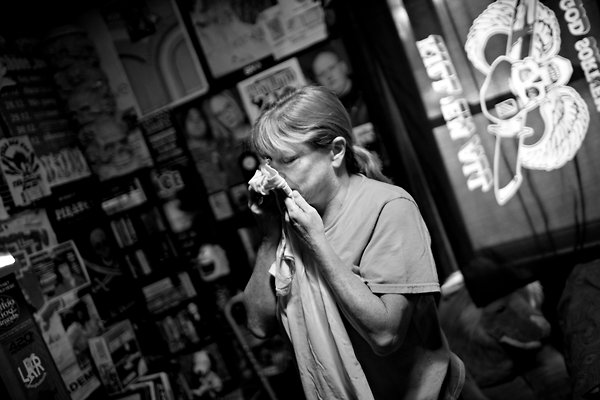Among the most tragic costs of war are surely the suicides of veterans who appear to have returned home safely from the battle front, often without any visible injuries, only to be haunted by ghosts that make life unlivable. We have commented on the problem in the past, but the magnitude of the problem was underscored yesterday by Nicholas Kristoff who noted that “[for] every soldier killed on the battlefield this year, about 25 veterans are dying of their own hands.” You have to linger over that last sentence to let it sink in.
The sheer numbers are simply stunning: one veteran suicide every 80 minutes, more than 6,500 per year or 24.1 per 100,000 (a ratio that is larger by more than a multiple of two for the general population which hovers around 11 per 100,000). As Kristoff reminds us, the annual rate of veteran suicides is larger than the total number of U.S. military killed in the Iraq and Afghanistan wars combined. The tragedy, of course, is not just the loss of life, though that is tragic enough, but that so much of such loss could be avoided with therapy that is simply not available or forthcoming. But even demands for access to more and adequate medical and psychological treatment, as true as they are, miss an important point: the problem is in large measure a function of its in/visibility.
To mark a problem as in/visible is to notice the sense in which a phenomenon is simultaneously (and paradoxically) visible and invisible, available to sight but unseeable. Sometimes it is a function of how the extraordinary is normalized, and sometimes it is a function of how the conventions of vision—of seeing and being seen—direct (or misdirect) our attention. The Ashley Gilbertson photograph that accompanied Kristoff’s editorial is much to the point. The image is of a mother who lost a son to suicide, though it is not officially recognized as such by Veteran services, who treat the death as an accidental drug overdose. That they could not see—or chose not to see—the death as a suicide is unclear. What is clear is the mother’s grief as she struggles to maintain physical contact with her absent son by connecting with his things, including his shirt which retains his scent. Her grief is tangible, made all the more so by the stark contrast of black and white tones of the image and the oblique angle that simultaneously marks the viewer as a spectator even as it pulls him/her into the scene, and it is impossible not to empathize with this mother’s pain. But of course, there is nothing in the photograph that distinguishes her pain from that of any other mother who has lost a child to war, whether from a sniper’s bullet or an IED. And yet her grief and agony are different, which is not to say that it is more or less than that of others; but that difference, however intuitive, however palpable, however visible, cannot be seen. And therein lies the problem.
Veteran suicides are not something that we don’t know about. The numbers have been reported in the past. And individual cases have been remarked upon from time to time. And yet the problem itself lingers in a nether world of the in/visible, a region of consciousness that makes it difficult to recognize it as a cost of war that requires not just our empathy, but our active attention.
Photo Credit: Ashley Gilbertson/VII

“That they could not see—or chose not to see—the death as a suicide is unclear. What is clear is the mother’s grief as she struggles to maintain physical contact with her absent son by connecting with his things, including his shirt which retains his scent.” I wonder if the question of seeing suicide/not might be glimpsed in the constant presence of death, Thanatos, creeping in from the corner, over the mother’s shoulder. Perhaps “creeping” is not the right word because it seems to be stable in its place, as well a a stack of skulls in the corner of the room. A shadow then? Haunting? Also, the motto: “Kill ‘Em All, Let God Sort ‘Em Out” is inverted, reflected, mirrored in the image, perhaps aiming the judgment to the “homefront,” hinting at our own culpability and yet a kind of resignation (not in a pejorative sense) we have trouble seeing. How do we see and cultivate our devotions to death? To be sure, there are other ways to “see” skulls, but in this scene, the “smiling” winged totem of the Marines hints at a religious creed, “Caedite eos. Novit enim Dominus qui sunt eius” (Kill them all. For the Lord knoweth them that are His), and a heavy metal hymn (Metallica) that sing of how we (soldiers/civilians) limit empathy and fail to account for our abilities to act. “Death smiles at us all. All a man can do is smile back,” is the quote from the film “Gladiator,” but I wonder if this image models another reaction we might heed.
And that reaction . . . to turn our back and refocus attention to the smells, sights, touches of the bodies around us.
I don’t know how I missed the skulls in this photograph, but I did. One more manifestation of the in/visible. Nice pick up!
[…] also more war in/visibility this morning from John Lucaites over at No Caption […]